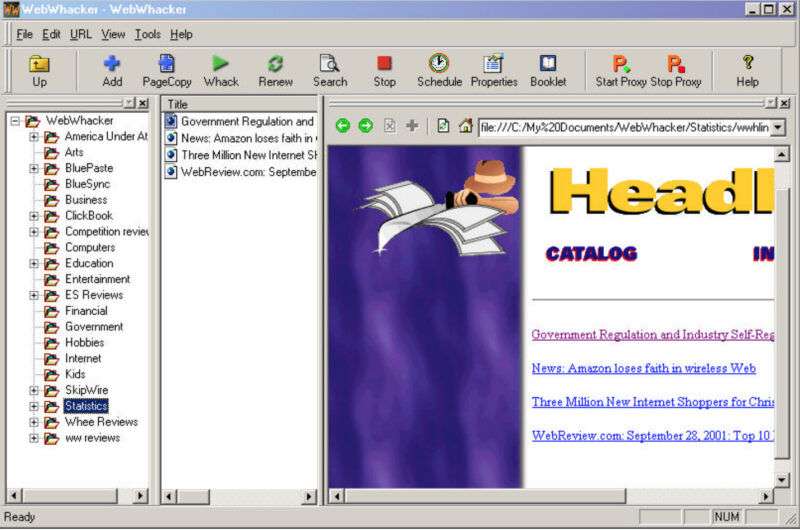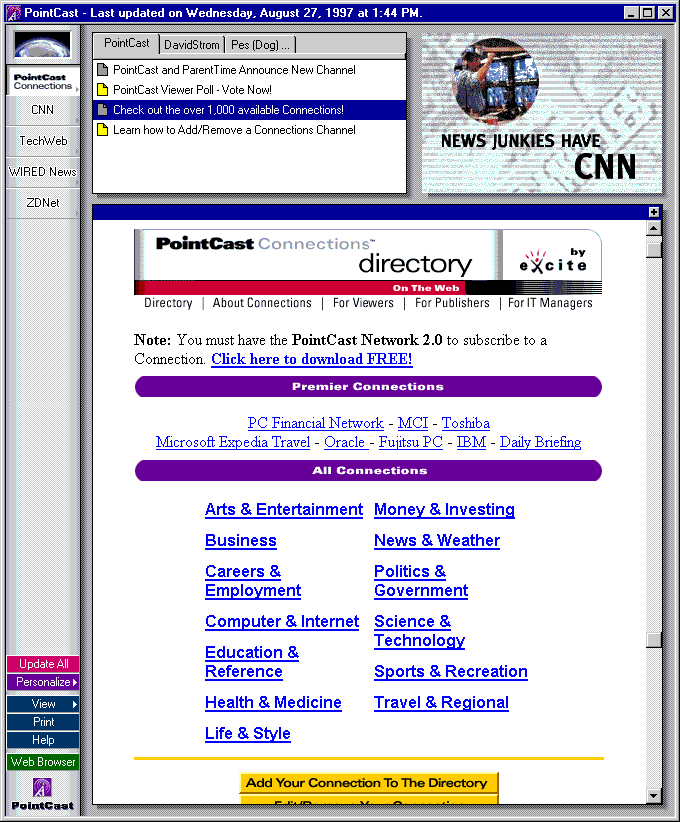In June of 2015, Alex Russell, a software engineer on the Google Chrome team, published a blog post. In the post, he went back through the failed history of web-adjacent application development. Tools that had been used to build apps with web technologies, but not apps that were native to the web. Russell proposed an alternative. He noted the developments that had been made in the browser in the last few years, work that he had helped with.
The web platform, Russell argued, had advanced. Advanced to the point that applications, similar to the ones you might install from an App store or on your computer, could be built directly in the browser. Using a few different features of the web, you could make a web-based application. He and front-end developer Frances Berriman had come up with a name for it: Progressive Web Applications. PWA for short.
PWA’s have themselves evolved over the years, and they are made up of a number of techniques and technologies. One of these is the use of an advanced JavaScript feature known as Service Workers. Service Workers are a script that runs in the background of a browser. When you connect to a website, a developer can deploy a Service Worker to intercept the request and do something else. It can be used for a lot of different things, but its relevance to PWA’s is the way it enables offline browsing. Once you’ve visited a website, a Service Worker can be used to download a version of that website straight to your device so you can continue using it even if you are in a place that has no Internet access. Once you’ve reconnected the Internet, the Service Worker can resync any changes.
Offline browsing has been a bit of a holy grail in web development. It was one of the advantages that native applications downloaded directly to mobile devices have had over websites run in a browser. Service Workers were the result of years of work, even before PWA’s were introduced, and they went through several iterations to try and get offline right.
But the dream of offline browsing dates back even farther than that. Back to ill-fated experiments almost as old as the web itself. An idea worth millions of dollars. Until everyone forgot about it.
Like PWA’s, the problem started with bandwidth. Or, more accurately, lack thereof. The web browsers of the 1990’s connected to the Internet using phone lines. It was expensive, slow, and a large lift on an already stretched-thin telecommunications network. In the early 2000’s, broadband would emerge as a faster solution unique to the information age. But before that, the web was prohibitively restrictive, a problem compounded when dealing with large media files like audio or video.
The web was, therefore, a tricky proposition. Going back to the same webpage over and over again often wasn’t worth it. To help users cope, a new kind of software emerged that offered an alternative. Tools to take the web offline. Rather than have to connect to a website every time you wanted to read an article or watch a video or listen to something, the software would download the webpage directly to your computer. You could access it anytime, even without being connected to the Internet.

The first of these were buggy and clumsy to use. Released in the first half of the 1990’s, they had names like WebWhacker, WebEx (a precursor to the subsequent Cisco-owned software) and OM-Express. They worked like a digital printer. You could select a webpage, download it to a folder on your computer, and view it whenever you want. If you knew your way around the computer, you could probably get them installed and working. Otherwise, you might have some trouble with their tricky user interfaces.
Soon, the options got more refined. When Freeloader launched the second version of their offline browsing software in September of 1996, they significantly raised the stakes. Freeloader, the first of many Internet companies started by Mark Pincus, offered an experience that was personalized and “channel” driven. Freeloader users could subscribe to websites — or groups of websites organized into channels — that Freeloader would monitor and download when there was new content.
Freeloader aimed to be an alternative way of browsing the web, one that was more passive and in the background. They were pushing features that, in modern lingo, might be described as “Netflix for content.” Subscribe to a number of targeted feeds, and Freeloader would handle pulling down content you could read at any time, without an Internet connection.
Freeloader was boosted by an important content partnership with MSNBC. They also locked up sponsorships from companies like IBM and AOL and secured funding from Softbank. With over a hundred thousand active users, Freeloader proved that there was money to be made in offline browsing; if it was packaged right.
Christopher Hassett rode into the web on the wave of that hype. He was the founder of PointCast, which launched in beta in early 1996. By the end of the year he would be CNet’s newsmaker of the year, and the man everyone promised was here to kill off the browser for good.

PointCast repackaged and renamed offline browsing as buzz-wordy “push” technology. The traditional way of browsing the web, clicking through links, was, in PointCast’s telling, pull media. The active act of pulling down content into your browser. The PointCast Network flipped things around. Users could subscribe to interests or websites, and when something was new, that content was pushed to your device where it could be passively consumed. We are all likely familiar with that paradigm these days. We call these push notifications now.
Wired‘s feature story on PointCast and other similar technologies was called “Push! Kiss Your Browser Goodbye: The Radical Future of the Media Beyond the Web.” (it would not be the last time Wired would proclaim the death of the web). With just a single product and a small user base, PointCast was nevertheless extensively covered in the press, a shining star among the rising dot-coms.
Based entirely on an inflated reputation, within a year of their initial release, News Corp approached Hassett with an offer to buy the company for $450 million. He declined, insisting that the company was worth double that, and beginning to file the paperwork to bring PointCast public.
By 1999, two years later, PointCast would be sold for $7 million dollars and stripped for parts.
The problem was not so much with the idea than the execution. The PointCast network was delivered via a scrolling screensaver, which presented you with news and other content while your computer was asleep.
The experience left many feeling overwhelmed. And when companies installed PointCast on their employees computers barely anyone noticed for a painfully obvious reason — by the time the screensaver clicked in, nobody was even looking at the screen. All the hype in the world can’t solve for a product users don’t even see.
But more importantly, PointCast had all but abandoned the offline part of offline browsing. To keep content in sync and constantly streaming, the software ended up using more bandwidth than your average web experience, at a time when bandwidth was still very much at a premium. And it turns out that most people had no problem with pulling content themselves, they just wanted to be able to do it on their own time.
PointCast ended up as a cautionary tale. It’s been cited as an example of dot-com excess and missed opportunity. But it also represents the culmination of a real need, one that was cast aside for almost 20 years before it was rolled into the web platform once again, this time in the form of Service Workers. We can’t reliably be connected to the Internet at all times. And with offline browsing, we don’t have to be.

Leave a Reply